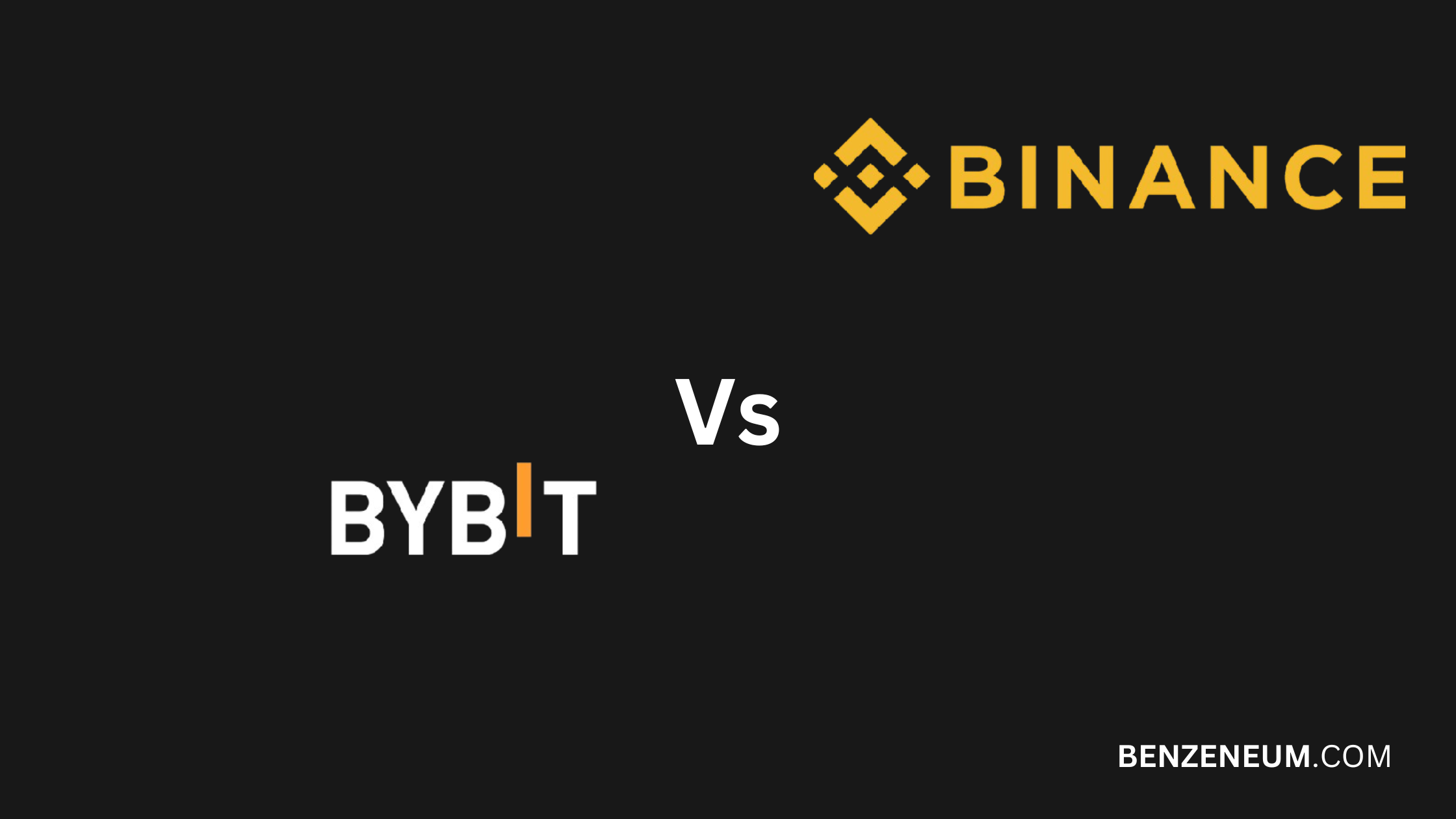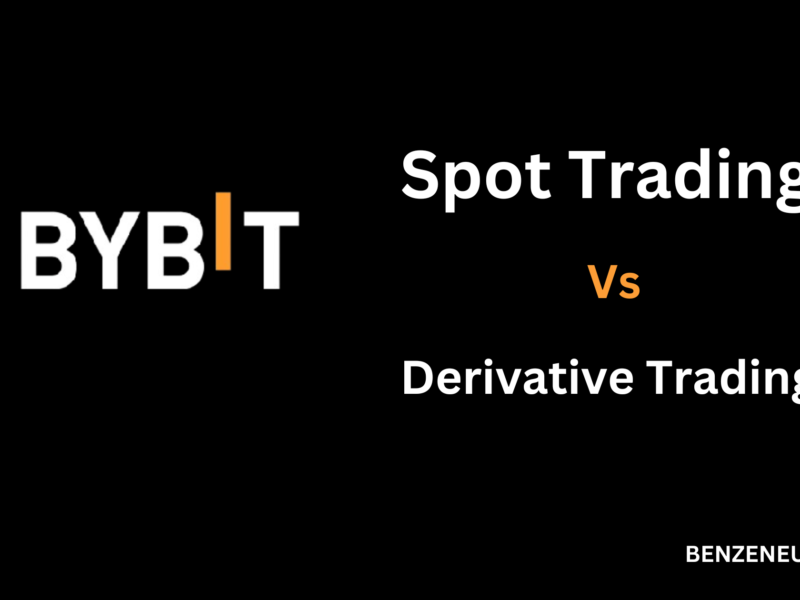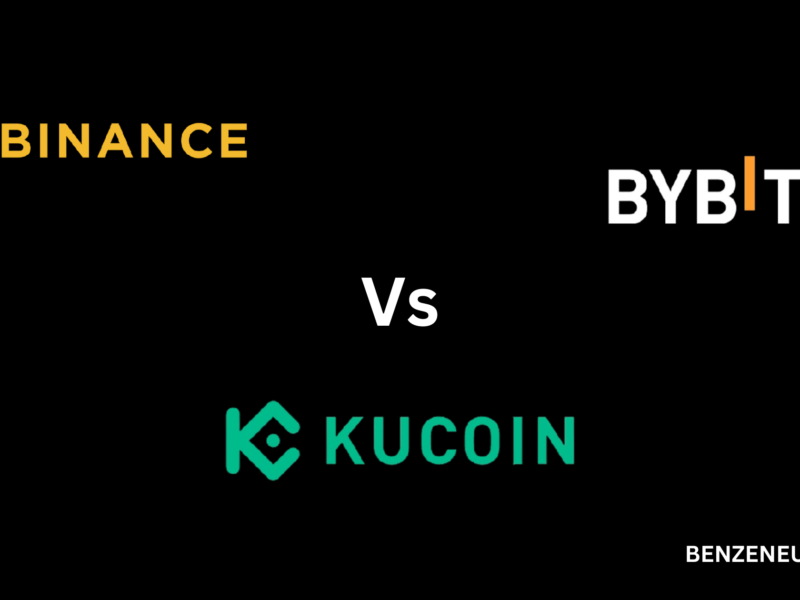When choosing a cryptocurrency exchange, Bybit and Binance often come up as top contenders. Both offer unique features and services that cater to different types of traders. Let’s compare these two exchanges across various aspects.
Binance: Best Overall
Why Binance is Best Overall: Summary
- Comprehensive Trading Options: Offers a wide range of trading options including spot, futures, margin trading, staking, and more.
- Extensive Cryptocurrency Support: Supports a vast array of cryptocurrencies and trading pairs, catering to diverse trading needs.
- Competitive Fees: Base trading fee of 0.1%, with reductions for high-volume traders or those holding Binance Coin (BNB).
- User-Friendly Interface: Intuitive, highly customizable interface suitable for both beginners and experienced traders.
- Robust Security and Compliance: Implements strong security measures, complies with regulations globally, and provides an insurance fund (SAFU) to protect users.
Recommendation: We recommend you try both platforms so that you can benefit from features that they both offer.
Comparison Between Bybit and Binance
| Feature | Bybit | Binance |
|---|---|---|
| Launch Year | 2018 | 2017 |
| Focus | Derivatives trading (perpetual contracts and futures) | Comprehensive trading (spot, futures, margin, staking, etc.) |
| Leverage | Up to 100x | Up to 125x on futures trading |
| Mobile App | Available on iOS and Android | Available on iOS and Android |
| Advanced Trading Tools | TradingView charts, robust API, multiple order types | TradingView charts, proprietary tools, extensive APIs |
| User Education | Bybit Academy for tutorials and trading strategies | Binance Academy offers tutorials, courses, and trading tips |
| User Interface | Clean, intuitive, customizable interface | User-friendly, highly customizable interface |
| Security | Cold storage for majority funds, 2FA, insurance fund, bug bounty program | Cold storage for majority funds, 2FA, SAFU insurance fund, bug bounty program |
| Supported Cryptocurrencies | Major cryptocurrencies (Bitcoin, Ethereum, Ripple, etc.) | Vast array of cryptocurrencies including major coins and numerous altcoins |
| Trading Pairs | Limited selection | Extensive selection |
| Supported Countries | Many countries with some regional restrictions | Wide availability with some regional restrictions, separate platform for US users |
| Languages | Multiple languages supported | Multilingual support |
| Trading Fees | Maker fee: -0.025%, Taker fee: 0.075% | Base fee of 0.1%, reduced with higher trading volumes or holding Binance Coin (BNB) |
| Withdrawal Fees | Varies by cryptocurrency, generally competitive | Varies by cryptocurrency, generally competitive |
| Deposit Fees | None | None |
| Regulatory Compliance | Operates in favorable jurisdictions, optional KYC for basic features, required for higher limits | Complies with various regulations, mandatory KYC for higher limits, separate platform for US users |
| Customer Support | 24/7 support, quick response times | 24/7 support |
| Community Engagement | Active community and social media presence | Strong community presence |
1. Bybit vs. Binance: Overview and Features
Bybit:
- Launch Year: 2018
- Focus: Bybit is Primarily a derivatives trading platform, offering perpetual contracts and futures.
- Leverage: Up to 100x leverage on popular pairs like BTC/USD.
- Mobile App: Available on iOS and Android.
- Advanced Trading Tools: Includes charting tools, technical analysis, and a robust API.
- User Education: Bybit Academy provides tutorials and trading strategies.
Binance:
- Launch Year: 2017
- Focus: Comprehensive exchange supporting spot trading, futures, margin trading, staking, savings, and more.
- Leverage: Up to 125x leverage on futures trading.
- Mobile App: Available on iOS and Android.
- Advanced Trading Tools: Extensive charting tools, technical analysis, APIs, and Binance Academy for education.
- User Education: Binance Academy offers tutorials, courses, and trading tips.
2. Bybit vs. Binance: User Interface
Bybit:
- Design: Clean and intuitive interface, designed with traders in mind.
- Customization: Users can customize their trading dashboard.
- Accessibility: Easy navigation between different trading pairs and markets.
- Charting Tools: Integrated TradingView charts for advanced technical analysis.
Binance:
- Design: User-friendly interface, suitable for both beginners and experienced traders.
- Customization: Highly customizable trading layout.
- Accessibility: Comprehensive navigation with access to various markets and services.
- Charting Tools: Advanced charting options with TradingView integration and proprietary tools.
3. Bybit vs. Binance: Security
Bybit:
- Cold Storage: Majority of funds are stored in cold wallets.
- Two-Factor Authentication (2FA): Strong 2FA for account security.
- Insurance Fund: To cover potential losses from market volatility.
- Bug Bounty Program: Encourages ethical hacking to identify vulnerabilities.
Binance:
- Cold Storage: Majority of funds stored in cold wallets.
- Two-Factor Authentication (2FA): Robust 2FA and other security measures.
- Insurance Fund: SAFU (Secure Asset Fund for Users) to protect users.
- Bug Bounty Program: Active program to improve security through external testing.
4. Bybit vs. Binance: Supported Cryptocurrencies
Bybit:
- Cryptocurrencies: Focuses on major cryptocurrencies like Bitcoin, Ethereum, Ripple, and a few others.
- Trading Pairs: Limited selection of trading pairs due to its focus on derivatives.
Binance:
- Cryptocurrencies: Supports a vast array of cryptocurrencies, including major coins and numerous altcoins.
- Trading Pairs: Extensive selection of trading pairs, catering to a diverse range of traders.
5. Bybit vs. Binance: Supported Countries
Bybit:
- Global Reach: Available in many countries, but restrictions exist for certain regions, including the US.
- Languages: Supports multiple languages for global accessibility.
Binance:
- Global Reach: Wide availability across numerous countries, including the US (through Binance.US), with some restrictions.
- Languages: Multilingual support to cater to international users.
6. Bybit vs. Binance: Fees
Bybit:
- Trading Fees: Maker fee: -0.025%, Taker fee: 0.075%.
- Withdrawal Fees: Varies by cryptocurrency but generally competitive.
- Other Fees: No deposit fees.
Binance:
- Trading Fees: Base fee of 0.1%, which can be reduced with higher trading volumes or holding Binance Coin (BNB).
- Withdrawal Fees: Varies by cryptocurrency, generally competitive.
- Other Fees: No deposit fees, various fees for other services like futures and margin trading.
7. Bybit vs. Binance: Regulatory Compliance
Bybit:
- Regulation: Operates in jurisdictions with favorable regulations for cryptocurrency trading.
- KYC Requirements: Optional for basic features but required for higher withdrawal limits and specific services.
Binance:
- Regulation: Complies with regulations in various jurisdictions and offers a separate platform (Binance.US) for US users.
- KYC Requirements: Mandatory KYC for higher withdrawal limits and specific services.
Bybit vs. Binance Scalping
When it comes to scalping, both Bybit and Binance offer features that cater to high-frequency traders, but they differ in their approach. Bybit is particularly strong in derivatives trading, providing a focused environment for scalping with its high leverage options and robust trading tools. Its user interface is streamlined for quick order execution, which is essential for scalping strategies. The platform’s advanced charting tools and the ability to use up to 100x leverage can benefit scalpers who need to make rapid, precise trades in the futures market.
Binance, on the other hand, supports scalping across a broader range of trading types, including spot trading, futures, and margin trading. It provides a comprehensive suite of trading tools and options, which is advantageous for scalpers who may switch between different types of trades. Binance’s liquidity is generally high, which is crucial for executing large numbers of small trades without significant slippage. The platform’s advanced trading features, such as multiple order types and API support, further enhance its suitability for scalping.
Bybit vs. Binance Trading Fees
Bybit has a distinct fee structure for trading that appeals to high-frequency traders. The trading fees are competitive, with a maker fee of -0.025% (a rebate) and a taker fee of 0.075%. This fee structure benefits market makers who provide liquidity to the market. Bybit also does not charge deposit fees, though withdrawal fees vary by cryptocurrency.
Binance offers a base trading fee of 0.1%, which can be reduced based on trading volume or if users hold Binance Coin (BNB), potentially lowering the fee to 0.075% or even less. Binance also provides a tiered fee structure based on trading volume and account level, which can be advantageous for frequent traders. While Binance has no deposit fees, its withdrawal fees are competitive and vary by cryptocurrency. Overall, Binance’s fee structure is flexible and beneficial for a wide range of trading activities.
Bybit vs. Coinbase
Bybit and Coinbase cater to different types of traders. Bybit is a derivatives-focused platform, offering advanced trading features such as high leverage on perpetual contracts and futures. It is designed for experienced traders who seek to leverage their positions and engage in short-term trading strategies. Bybit’s interface is optimized for quick and precise trading, making it suitable for those looking to trade with high leverage and advanced tools.
Coinbase, in contrast, is a user-friendly platform primarily aimed at newcomers and casual investors. It focuses on spot trading and is known for its ease of use and regulatory compliance. Coinbase offers a straightforward interface and a range of educational resources for beginners. While it supports a smaller range of cryptocurrencies compared to Binance, it provides a secure environment for buying, selling, and holding digital assets. Coinbase also has a pro version (Coinbase Pro) for more advanced trading, but it generally lacks the high-leverage trading options offered by Bybit.
Bybit vs. Binance vs. KuCoin
When comparing Bybit, Binance, and KuCoin, each platform has its strengths and caters to different trading needs.
Bybit excels in derivatives trading with high leverage options and a focus on perpetual contracts and futures. It is ideal for advanced traders who need sophisticated trading tools and high leverage. Bybit offers a clean and intuitive interface designed for rapid execution and technical analysis.
Binance stands out with its comprehensive suite of trading options, including spot, futures, margin trading, and staking. It supports a vast array of cryptocurrencies and provides competitive fees, making it a versatile choice for both beginners and experienced traders. Binance’s liquidity and extensive trading tools further enhance its appeal for a wide range of trading activities.
KuCoin offers a broad selection of cryptocurrencies and trading pairs, making it a strong competitor for those seeking diversity. It supports spot, margin, and futures trading, with a user-friendly interface and competitive trading fees. KuCoin is known for its extensive range of altcoins and innovative features, such as staking and lending, which add value for diverse trading strategies.
In summary, Bybit is best for high-leverage derivatives trading, Binance offers a broad and versatile trading environment, and KuCoin excels in cryptocurrency diversity and additional features. Each platform has its unique advantages depending on the trader’s needs.
Want to find reliable crypto exchange? Check out this crypto exchange comparison.
Related:
Conclusion
Choosing between Bybit and Binance depends on your trading needs and preferences.
- Bybit is ideal for traders focused on derivatives and high-leverage trading. Its clean interface, robust security measures, and advanced trading tools make it a strong choice for experienced traders. However, its limited selection of cryptocurrencies may be a drawback for those looking to trade a diverse range of assets.
- Binance offers a broader range of trading options, including spot trading, futures, margin trading, and a vast selection of cryptocurrencies. Its user-friendly interface, competitive fee structure, and compliance with regulations make it suitable for both beginners and seasoned traders. Additionally, Binance’s extensive educational resources and strong community presence add to its appeal.



